9 kitchen ceiling light ideas to make a statement in your cooking space
From barely there to beautifully bold - see the different ways to work ceiling lights
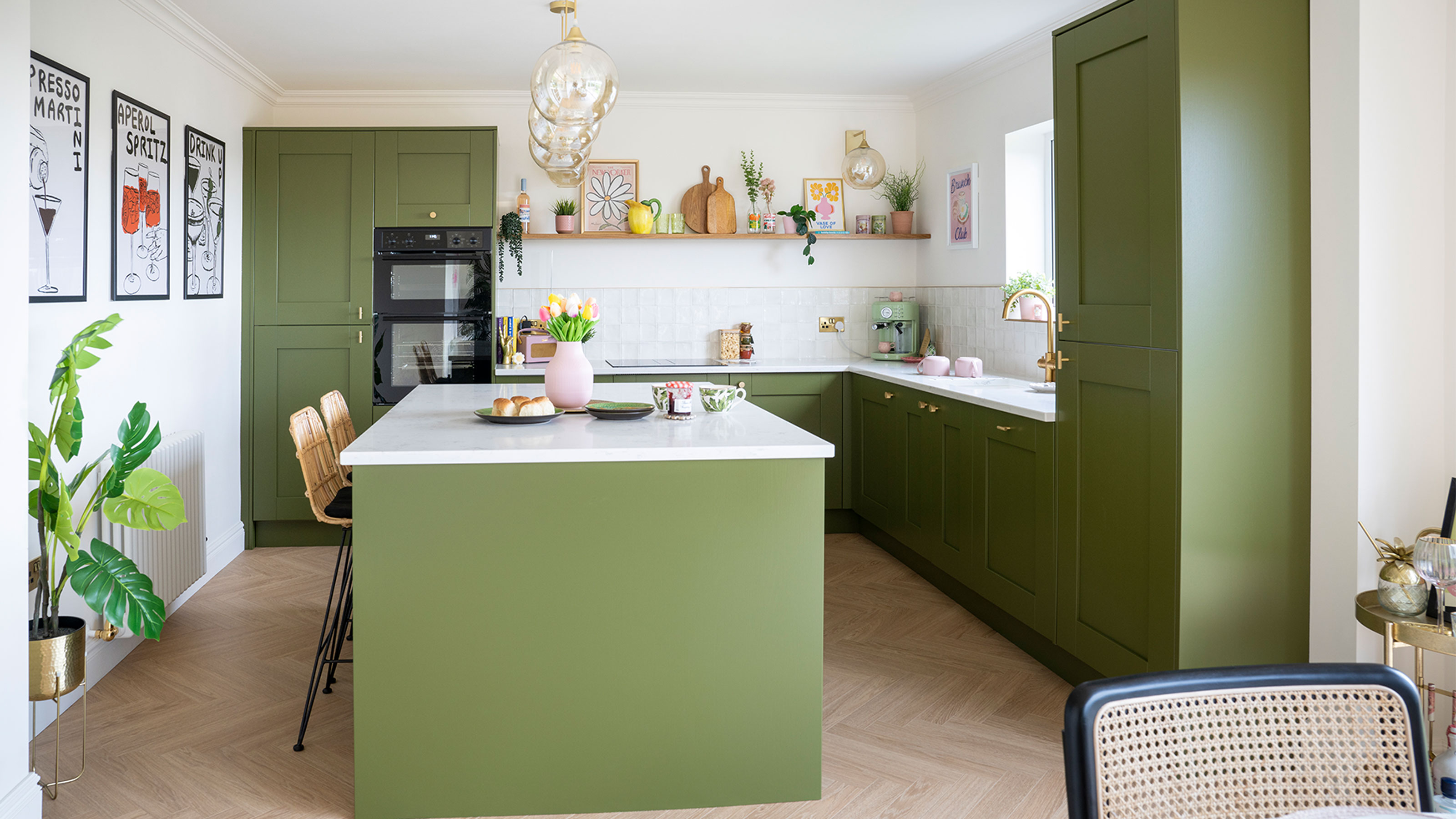
- 1. Go for light-enhancing glass pendants
- 2. Make a feature of the fitting
- 3. Include sound with spotlights
- 4. Combine bold pendants with subtle spotlights
- 5. Zone different areas
- 6. Don't forget to include a dimmer switch
- 7. Add character with a contrasting colour
- 8. Cast an even glow
- 9. Add extractor lights
- FAQs
Holly Cockburn
Spots, tracks, pendants and chandeliers, the options in kitchen ceiling light ideas alone are vast. So how can you make the right choice for you and the way you use your kitchen?
'Look at the areas of your kitchen and think about the activities that will happen in each space,' says Marketa Rypacek, managing director, Industville. 'Some spaces, such as food preparation zones, the kitchen sink and above the hob, will require task lighting, while others, such as the dining area, call for mood and accent lighting.
'In terms of the size and arrangement of the lights, this completely depends on the size of your kitchen and island dimensions, as well as the overall look you want to achieve.'
Whatever the size or shape of your kitchen and the design styles you're drawn to, there are a number of ways to ensure that your kitchen lighting ideas function well and look good in your scheme.
1. Go for light-enhancing glass pendants

In a neutral kitchen, add to a spacious and bright look with glass pendants in an icy white tone. 'Clusters of pendants in odd numbers can make an eye-catching display,' says Marketa Rypacek, managing director, Industville. 'One of the most common mistakes with kitchen island lighting is that people go too small. Try playing with different heights, shapes and shades for a unique look.
'Alternatively, a large single statement pendant can create a real standout talking point. However, be mindful to consider the size of your table or island and the room size, in general, to make sure it doesn’t overwhelm the space or appear off-balance.' This is particularly important when looking at small kitchen lighting ideas.
2. Make a feature of the fitting
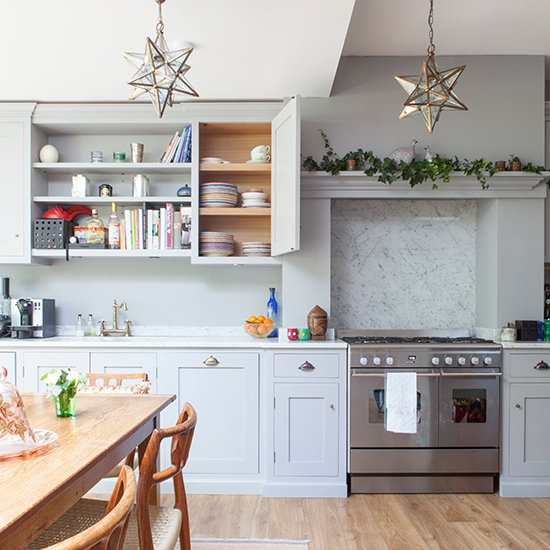
'The right lighting over your kitchen island can really make a bold design statement, which sets the tone for the rest of the space,' says Jo Plant, head of design at Pooky. 'Pendant lights are the best choice. As well as providing a great source of practical downlight, they look simply stunning suspended over a kitchen island,'
Sign up to our newsletter for style inspiration, real homes, project and garden advice and shopping know-how
So why not go for a playful design? Set against the backdrop of a traditional kitchen these star pendants make a real statement.
3. Include sound with spotlights
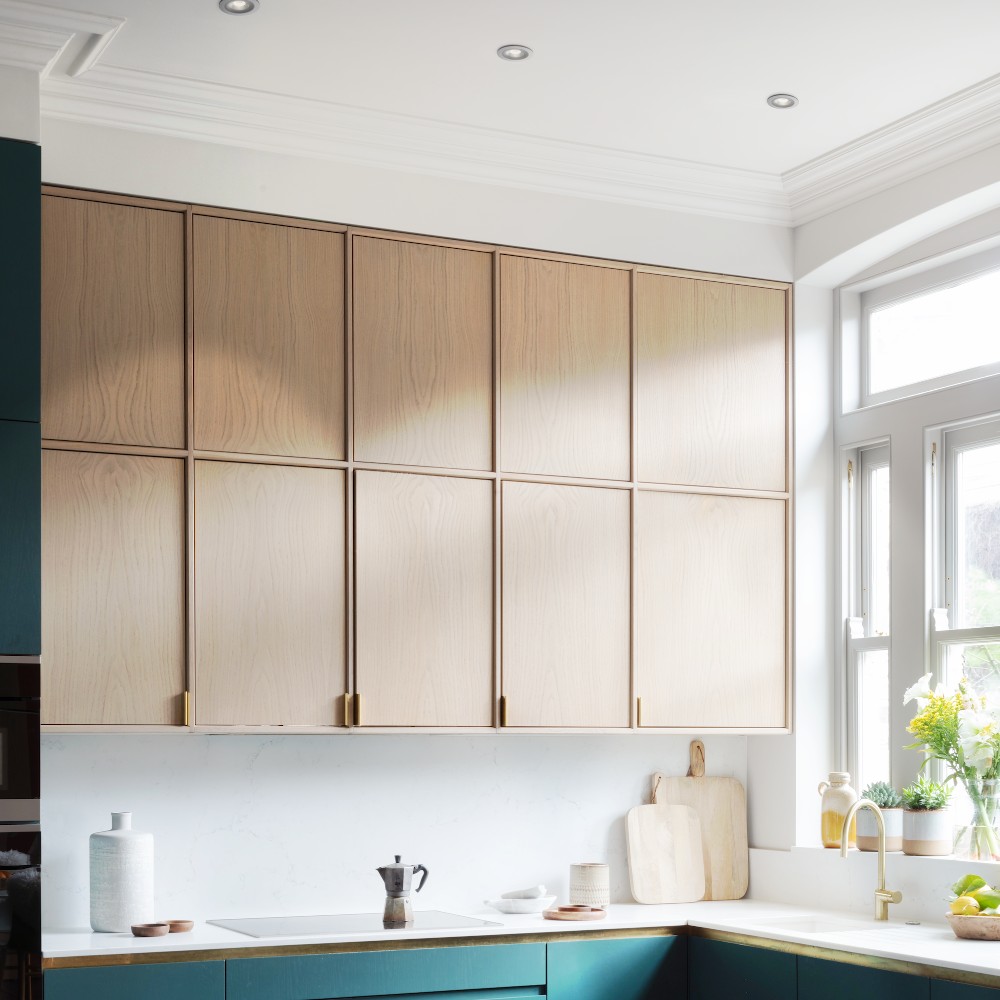
If you like the idea of a 'smart home' and prefer not to have bulky speakers or radios cluttering up your surfaces, consider ceiling spotlights with sound.
'Unlike pendant lights, spotlights can also offer homeowners so much more than just light,' says Morten Warren, founder of Zuma. 'Discerning customers demand more, they want smart solutions that work and fit beautifully into the home without all the clutter.
'People are looking for experiences that continue to impress and take convenience to the next level. High-performance lighting with high-fidelity audio brings together two everyday essentials – light and sound – into one easy-to-use app or voice-controlled unit. It's a game-changer.'
4. Combine bold pendants with subtle spotlights
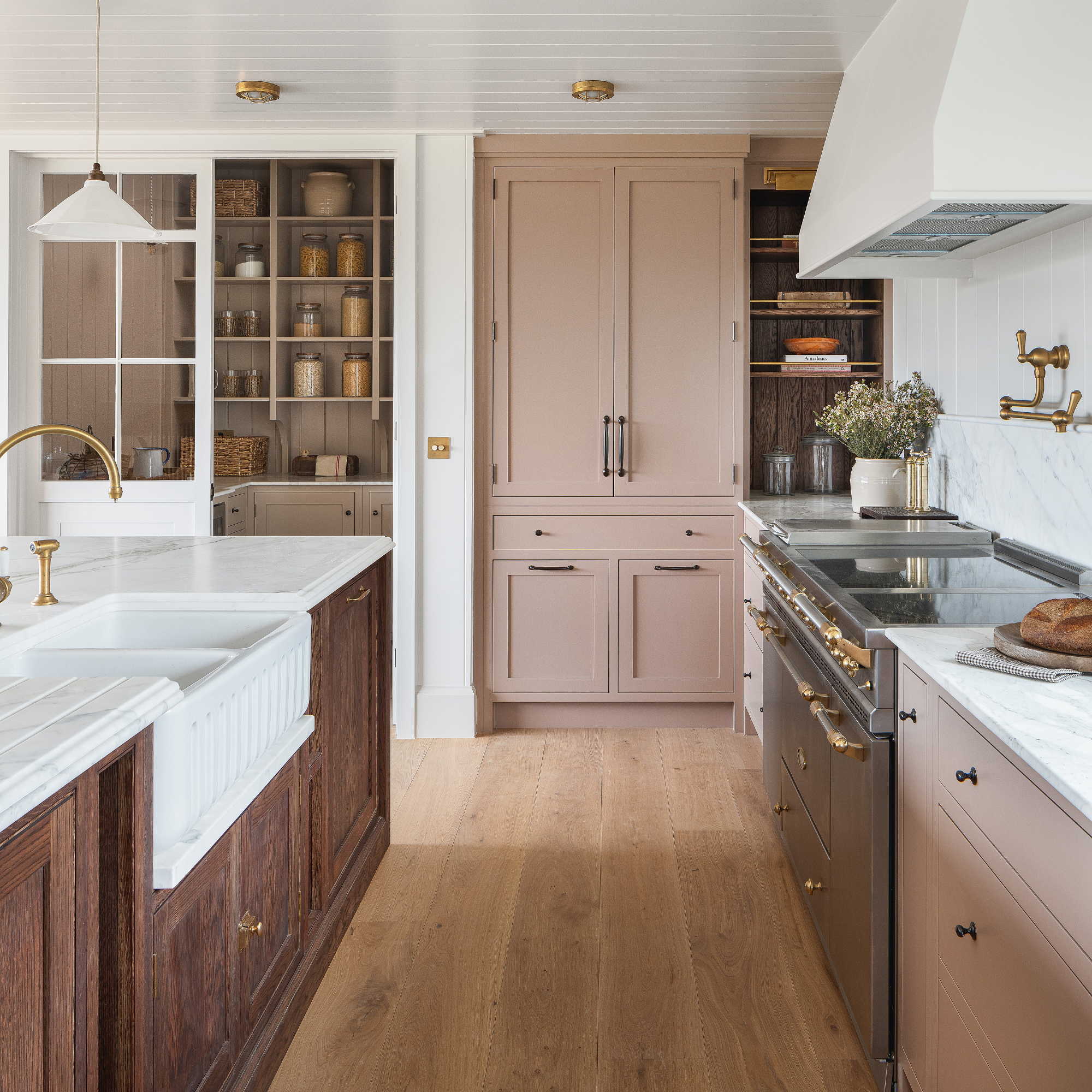
'Stronger lighting is required for preparing and cooking, but softer lighting makes for a calm, relaxing ambience when eating and socialising,' says Graeme Smith, head of design at Life Kitchens.
So if you fancy an eye-grabbing style for mood-enhancing pendants, let your task lights blend into the background. 'For ceiling spotlights, my advice is to be as discreet as possible, ideally white frames and a simple grid pattern,' says Emma Cowburn, senior kitchen designer at Harvey Jones.
'In terms of pendant type that really depends on the room style you want to achieve, and my advice will always be – be bold! Let your pendants do the talking, your ceiling needs to be a simple, non-distracting backdrop. If you need inspiration for your lighting scheme look at different kitchen lighting layouts for a starting point.
5. Zone different areas
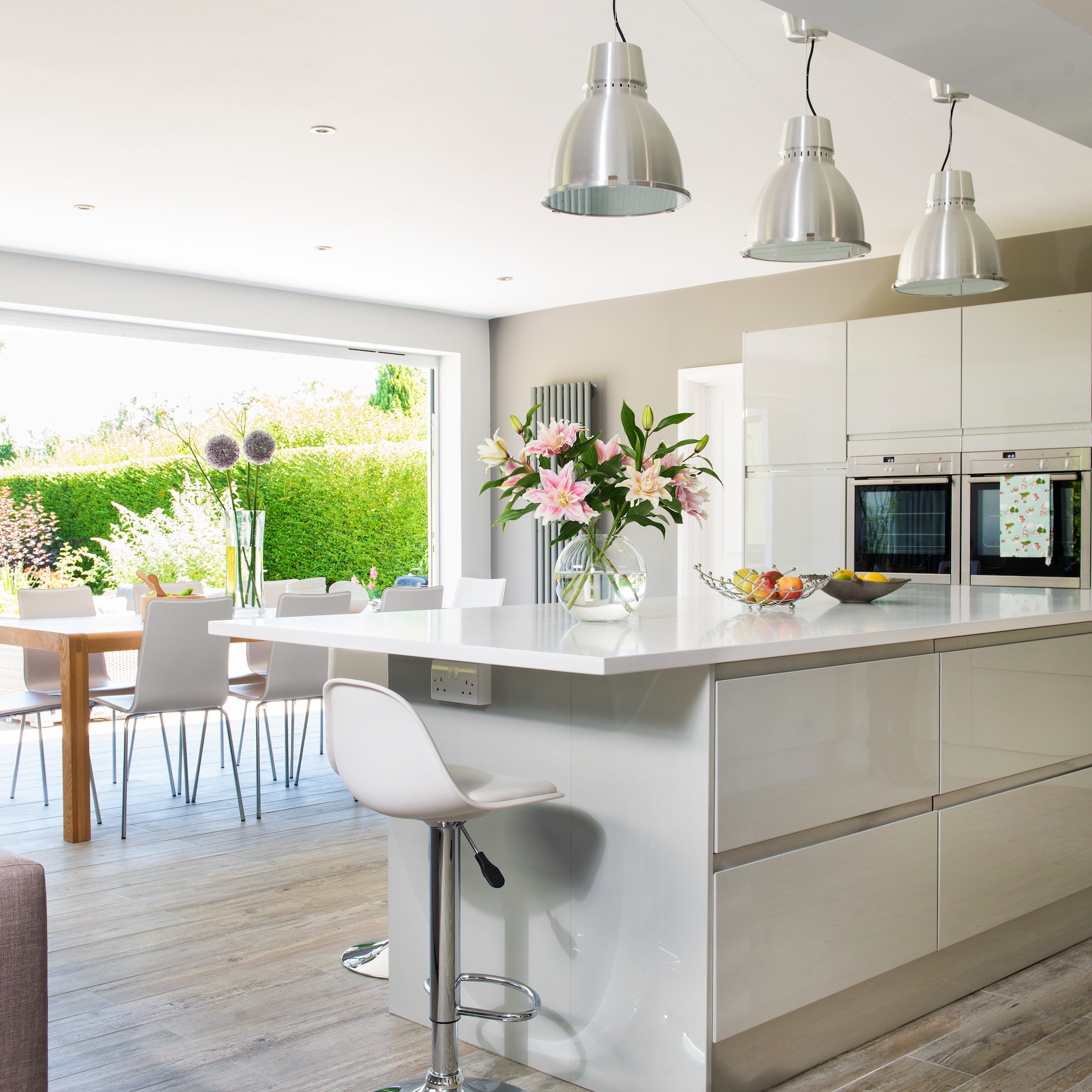
Ceiling lights are another way you can define different spaces as part of your open-plan kitchen ideas, with spotlights marking one zone and pendants another. 'Using lighting to define zones in an open plan kitchen can add depth and interest, whilst creating an orderly living space,' says Marketa Rypacek, Industville.
'In the kitchen a well-placed pendant or cluster of decorative lights can draw the eye giving each area a clear purpose.'
'A row of three pendants is most popular,' adds Emma Cowburn, Senior Kitchen Designer at Harvey Jones. 'But bear in mind that two is better than three tightly positioned pendants.'
6. Don't forget to include a dimmer switch
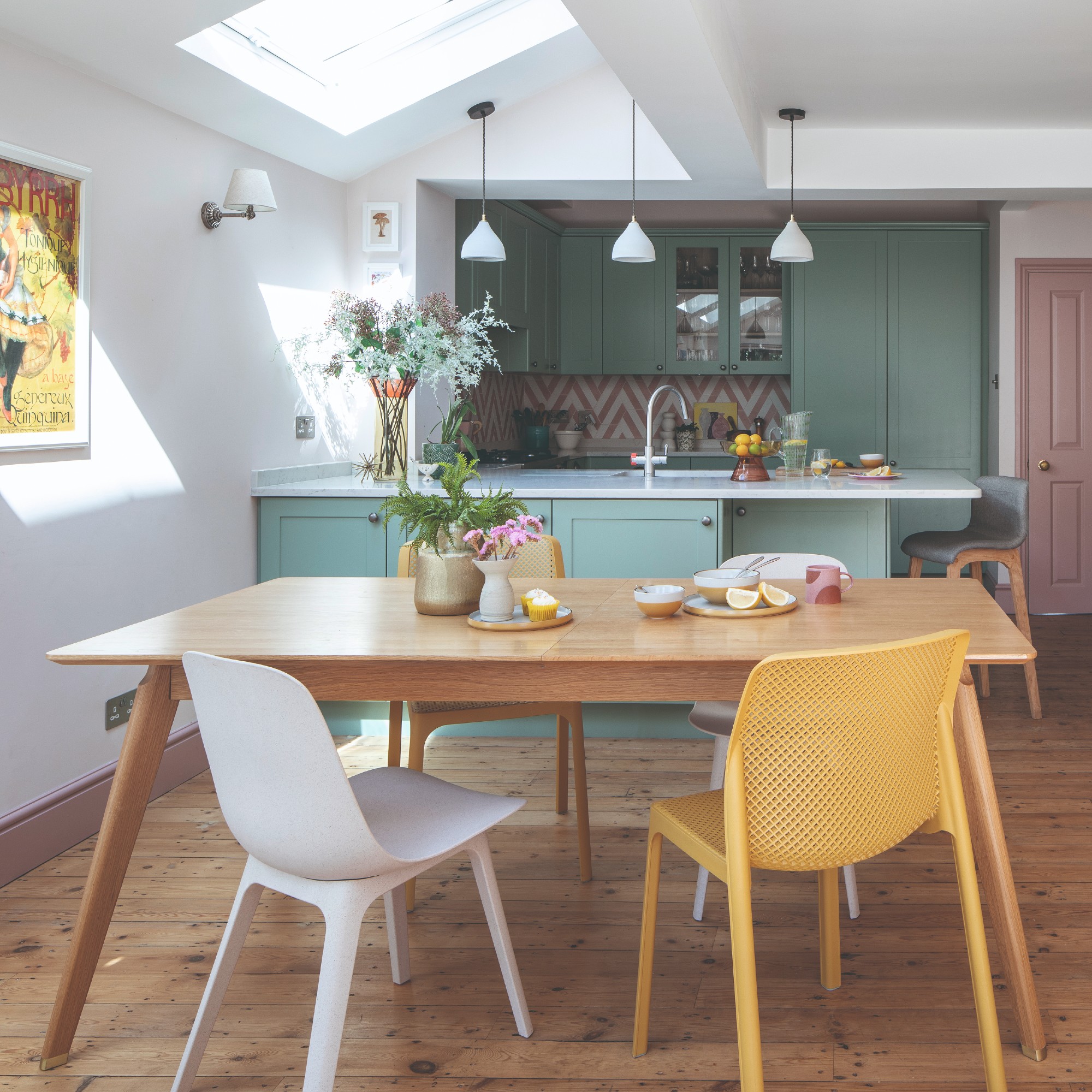
'The top consideration for lighting any space, no matter what the size, scale or budget is a dimmer switch,' says Marketa Rypacek, Industville. Make sure your lighting doesn't fall under the kitchen design mistakes you want to avoid when planning your scheme.
'Dimmer switches are a quick and cost-effective way of offering multiple lighting levels in a space. They allow you to set the tone and change the atmosphere of a room instantly. For instance, you may prefer a low light for entertaining guests at a dinner party, but still require the option of full brightness if you’re reading later.'
To reap the benefits of a dimmer, ensure your spotlights are on a different circuit to your pendants or chandelier. This way you can brighten or lower sections of lights, rather than all at the same time.
'You may make your electrician’s job harder but being able to control the lighting helps you recreate your space for every occasion,' adds Emma Cowburn, Harvey Jones.
7. Add character with a contrasting colour

'In my opinion, pendant lighting always looks good above a kitchen island. Not only does it add a decorative touch, but it also provides effective task lighting,' says Charlie Smallbone, Ledbury Studio.
'An island performs a range of roles in the kitchen. It’s where you cook, wash up, and prepare food, but it can also be where you dine or socialise. The right lighting is therefore crucial, and – most importantly – it should be able to adapt to all functions.'
‘Bar pendants have become a staple in most kitchens, but we’re seeing more playful designs come to the forefront,' adds Peter Legg, Där Lighting. 'Colourful designs will add a pop of warmth and personality.'
8. Cast an even glow
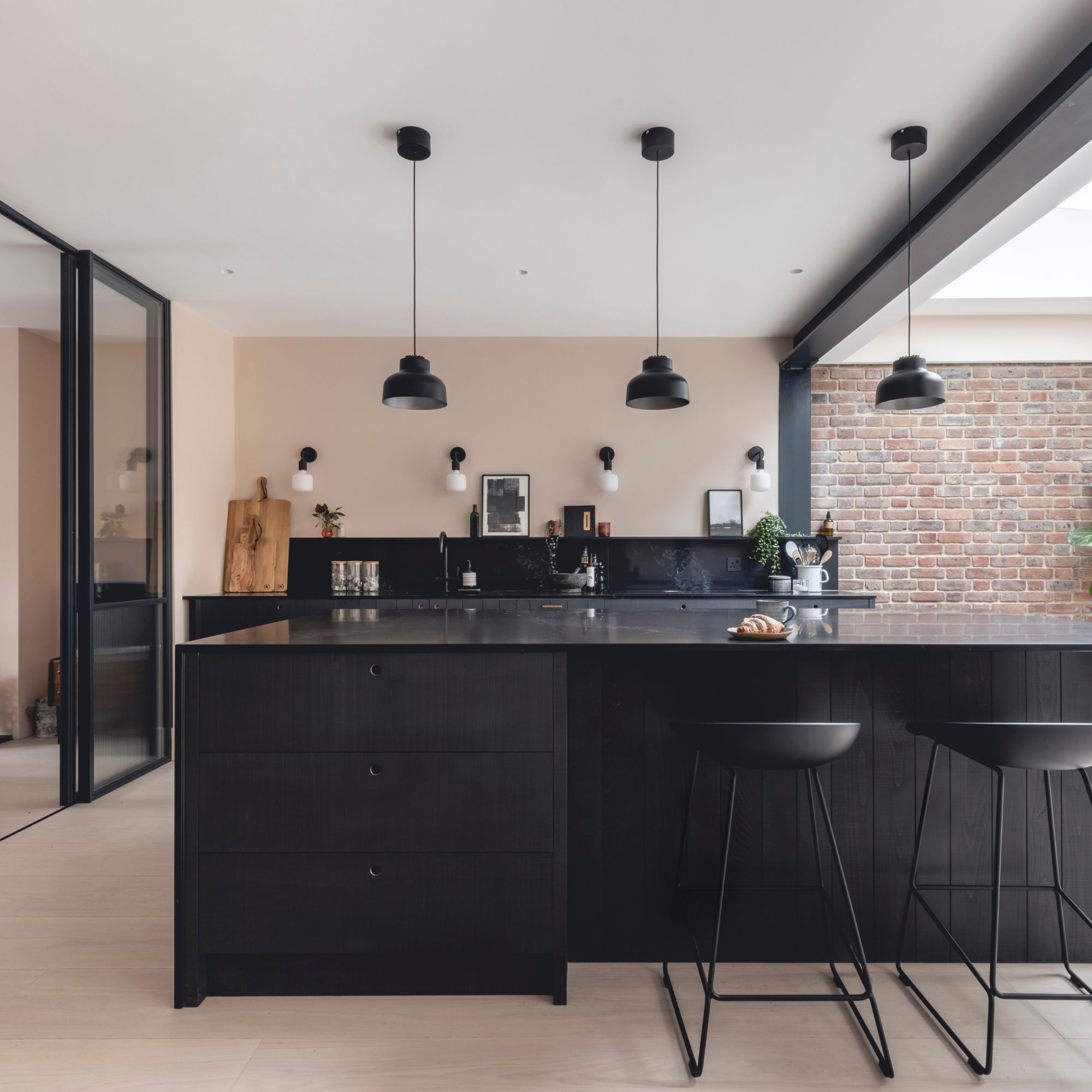
Cooking, chopping, clearing up and other kitchen business requires targeted task lighting in the key working areas. 'Aim to position your pendants so that the light is cast as evenly as possible throughout the space,' says Jo Plant at Pooky.
'To supplement your ambient lighting, you will need targeted task lighting in the main cooking and preparation areas. So think adjustable spotlights and recessed lighting, especially for over sink kitchen lighting ideas.
'If you have wall cabinets include under-cabinet lights fitted above the sink and cooker, over the counters, and any other areas where you’re preparing or serving food. These will provide effective, focused light and help to reduce any unwanted shadows, as well as contribute to the amount of overall light in the kitchen.'
9. Add extractor lights
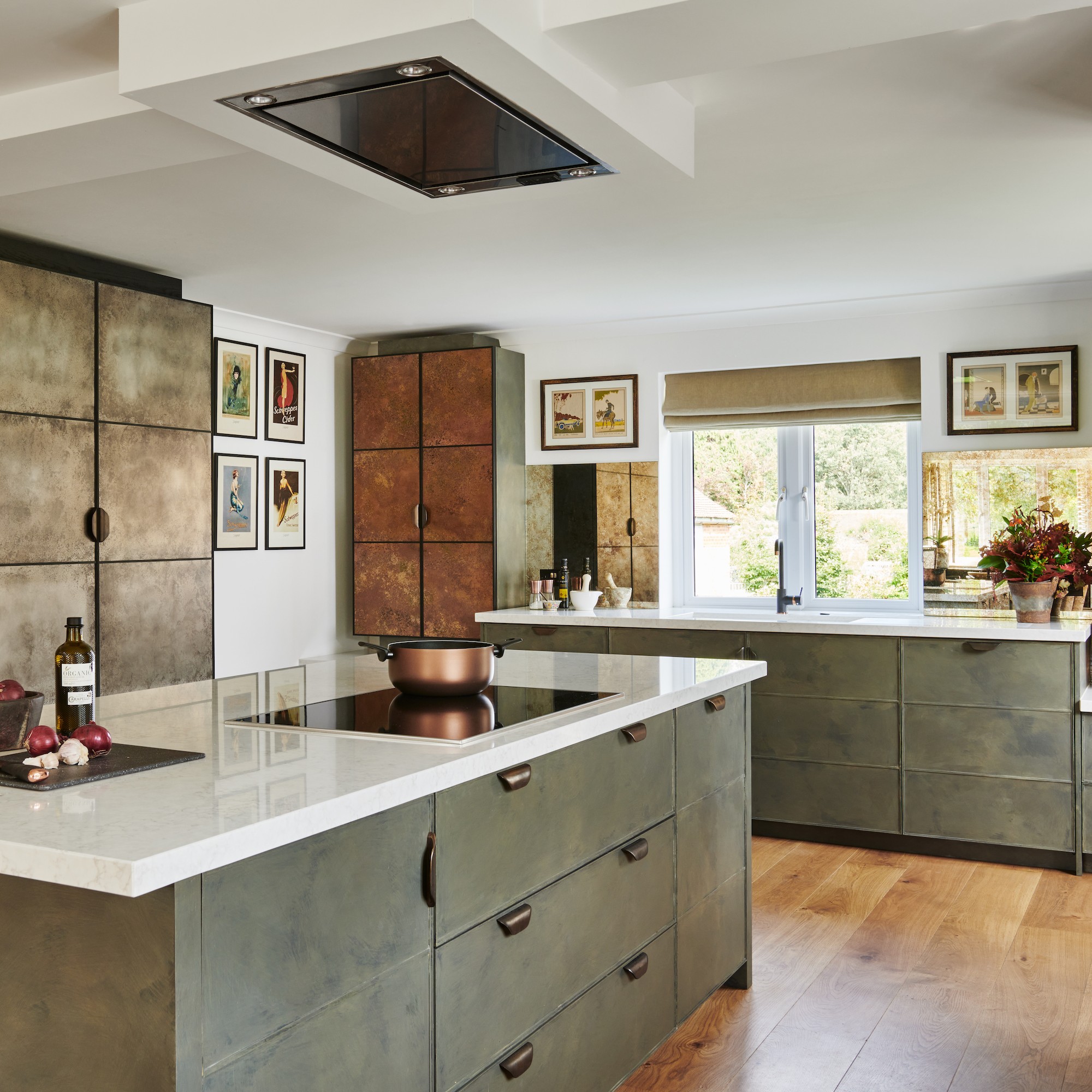
Prefer your ceiling to not be littered with spotlights and unsure about another pendant when planning your kitchen lighting layout? Extractor lights are a good alternative. 'You may not want a pendant suspended over your island unit, if you already have a showstopper over your dining table as it would create competition,' says Charlie Smallbone, founder, Ledbury Studio.
'Or perhaps you just want a clear view through your kitchen? This is when powerful extractor lighting comes into its own, illuminating the hob and the surrounding kitchen worktop. Although this only works if the island isn’t too big, so generally around two metres long.'
FAQs
Are kitchen ceiling lights necessary?
Yes, it's imperative that you can see what you're doing in a kitchen. With hot oil, boiling water and sharp knives it's essential your kitchen is well lit with good overhead ceiling lighting. Wall, cabinet and shelf lights are great for extra layers of task or mood lighting but ceiling lights will illuminate a larger area.
Where should lights be placed on a kitchen ceiling?
It depends on the layout of your kitchen but when looking into how to plan kitchen lighting your preparation, cooking and dining areas should be sufficiently illuminated. According to kitchen expert, Charlie Smallbone, founder of Ledbury Studio, 'Identify the key working areas of your kitchen and make sure they’re well lit. Downlights are best regularly spaced to ensure an even spread of light.' Ensure your kitchen is perfectly by planning out how many spotlights do I need while planning your lighting layout.
Should kitchen lights be warm or cool?
Rohan Blacker, founder of Pooky advises that a cooler light temperature works well in a kitchen. 'With most people now opting for LED fittings due to their longer lifespan and energy efficiency, it’s important to understand what type of bulb you require for the different type of fitting and fixture. As well as matching it to the ambience you want to create in that space,' says Rohan.
'The kelvin measurement on a bulb helps you understand the colour of the light it will produce. As a rule of thumb, the higher the value the whiter the light with lower values producing softer warmer glows.
'If you want to mimic daylight and prefer cooler tones, for instance in a kitchen, then look to incorporate bulbs with a higher kelvin value. Something between 4000-5000K works well in spaces that require this type of task lighting.'
Are you ready to start shopping for ceiling lights for your kitchen?
Jacky Parker is a freelance interiors & lifestyle journalist, specialising in modern interiors, design and eco living. She has written for Future’s interior magazines and websites including Livingetc, Homes & Gardens, Country Homes & Interiors and Ideal Home for over fifteen years, both as a freelance contributor and inhouse, with stints as Acting Digital Editor, Livingetc and Acting Style Content Editor, Country Homes & Interiors. Her work also features in national and international publications including Sunday Times Style, Telegraph Stella, The Guardian, Grand Designs, House Beautiful and more. With years of experience in the industry Jacky is privy to the insider view and the go-to places for interior inspiration and design-savvy décor.
- Holly CockburnContent Editor